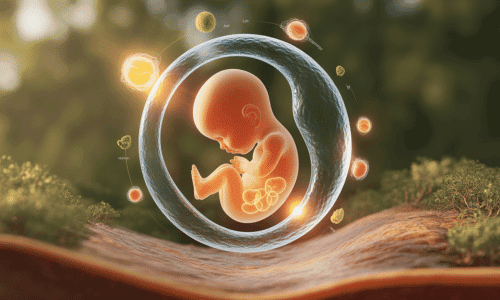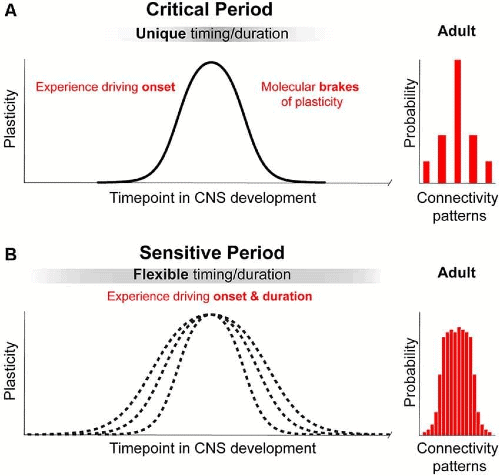Physical Development Across the Lifespan Chapter Notes | AP Psychology - Grade 11 PDF Download
| Table of contents |

|
| Introduction |

|
| Physical development before birth |

|
| Physical Development Patterns in Infancy and Childhood |

|
| Adolescent Physical Development |

|
Introduction
Physical development across the lifespan examines how the human body changes from conception through old age. This chapter explores prenatal factors affecting development, motor skill progression in infancy and childhood, the role of infant reflexes, depth perception, critical and sensitive periods, the dramatic changes of adolescence, and the gradual physical shifts in adulthood. Understanding these stages highlights the biological and environmental influences shaping physical growth and their psychological impacts.

Physical development before birth
Prenatal development involves key physical and psychological milestones. Various factors can influence fetal growth.
Teratogens:
- Harmful substances disrupting normal fetal development, especially during critical periods.
- Examples: Alcohol (causes developmental disorders), tobacco, recreational drugs, certain medications (e.g., anticonvulsants, Accutane), environmental chemicals, radiation.
- Infections like TORCH (e.g., toxoplasmosis, rubella) and Zika can cross the placental barrier.
- Chronic maternal conditions (e.g., diabetes, hypertension), fever, or severe stress can affect development.
Genetic Influences:
- Inherited mutations from parents.
- Spontaneous mutations during cell division.
- Chromosomal abnormalities (numerical or structural).
- Single-gene disorders impacting specific developmental pathways.
Hormonal Environment:
- Maternal hormone imbalances (e.g., thyroid, cortisol).
- Exposure to endocrine-disrupting chemicals.
- Hormones guide sexual differentiation and brain development.
Environmental Factors:
- Nutritional status (e.g., folate levels, overall diet).
- Physical exposures (e.g., heavy metals, air pollution).
- Social factors (e.g., healthcare access, maternal support).
- These factors interact to shape development outcomes.
Physical Development Sequence
- Physical development in infants and children follows a predictable order, though timing varies.
- Reflects nervous system and muscle maturation.
- Development Principles:
- Cephalocaudal pattern: Control develops from head to toe.
- Proximodistal pattern: Control develops from body center outward.
- Influencing Factors:
- Genetics.
- Nutrition.
- Environmental stimulation.
- Patterns are universal across cultures, indicating strong biological roots.
Physical Development Patterns in Infancy and Childhood
Motor Skill Development
 Motor skills, both gross (large movements) and fine (small movements), are critical for independence and exploration in infancy and childhood.
Motor skills, both gross (large movements) and fine (small movements), are critical for independence and exploration in infancy and childhood.
These milestones foster autonomy, supporting cognitive and social-emotional growth through environmental interaction.
Infant Reflexes
New borns exhibit reflexes indicating healthy neurological development, aiding survival and providing diagnostic insights.
Key Reflexes:
- Rooting: Turns toward cheek touch to locate food.
- Sucking: Automatic sucking when mouth roof is touched.
- Moro (Startle): Arms extend outward when startled.
- Palmar Grasp: Grips fingers placed in palm.
Reflexes fade as the brain matures; persistence may signal developmental issues.
Depth Perception Development
- Visual cliff experiments show infants develop depth perception early.
- Visual Cliff Experiment:
- Uses a transparent surface over an apparent drop.
- Tests if infants avoid the “deep” side.
- Avoidance seen by 6-8 months, indicating depth perception.
- Key Insights:
- Depth perception is partly innate, refined by experience.
- Visual-motor coordination develops with perception.
- Infants use visual cues to guide behavior before walking.
- Impact of Visual Cliff Research:
- Provided behavioral measures beyond looking time.
- Showed sophisticated perception in preverbal infants.
- Linked perception to protective behaviors.
Critical and Sensitive Periods

Development features periods when environmental inputs significantly shape outcomes.
- Critical Periods:
- Attachment formation is critical in the first two years.
- First language acquisition is most efficient before puberty.
- Sensitive Periods:
- Optimal times for skill acquisition, with reduced efficiency later.
- Neural plasticity remains but requires more effort.
- Second language learning is harder after childhood.
- Research Evidence:
- Language deprivation in early years impairs normal language development.
- Neural connections form and prune based on stimulation.
- Early interventions for delays yield better results.
- Imprinting in Animals:
- Goslings/ducklings follow the first moving object (usually mother).
- Ensures offspring stay with caregivers.
- Hard to reverse once established.
- Shows biological basis for critical periods.
Adolescent Physical Development
Adolescence features rapid physical changes driven by hormones.
Growth Spurt:
- Earlier in females (10-12 years) than males (12-14 years).
- Rapid height increase (3-5 inches/year at peak).
- Weight gain and muscle growth.
- Temporary coordination challenges.
Puberty:
- Triggered by hypothalamic-pituitary-gonadal axis.
- Increases sex hormones (estrogen, testosterone).
- Develops primary sex characteristics (reproductive organs).
- Develops secondary sex characteristics (body hair, voice changes, breast development).
Milestones:
- Menarche (females, 12-13 years).
- Spermarche (males, 13-14 years).
- Mature reproductive capabilities.
- Increased acne due to sebaceous gland activity.
Psychological Impacts:
- Body image concerns.
- Identity development.
- New social dynamics.
- Parallel growth in abstract thinking.
Physical Changes in Adulthood
Adulthood involves gradual physical declines across various systems.
Early Adulthood (20s-30s):
- Peak strength and stamina.
- Optimal sensory function.
- Maximum reproductive capacity.
- Completed prefrontal cortex development.
Middle Adulthood (40s-50s):
- Decline in muscle mass/strength.
- Metabolism slows, weight distribution shifts.
- Perimenopause/menopause in women.
- Mild sensory declines (vision, hearing).
Later Adulthood (60s+):

- Significant strength/flexibility loss.
- Slower reaction/processing speed.
- Notable sensory changes.
- Longer recovery after exertion.
Reproductive Changes:
- Women:
- Menopause (45-55 years).
- Cessation of menstruation.
- Reduced estrogen.
- End of fertility.
- Men:
- Gradual testosterone/sperm decline.
- Fertility may persist into old age.
Sensory Changes
- Vision: Presbyopia (difficulty focusing on close objects) by 40s-50s.
- Hearing: High-frequency hearing loss.
- Taste and smell: Reduced sensitivity.
- Touch and temperature: Decreased sensitivity.
|
35 docs
|
FAQs on Physical Development Across the Lifespan Chapter Notes - AP Psychology - Grade 11
| 1. What are the stages of prenatal physical development? |  |
| 2. How do motor skills develop in infancy? |  |
| 3. What are infant reflexes, and why are they important? |  |
| 4. What is depth perception, and how does it develop in children? |  |
| 5. What physical changes occur during adulthood? |  |



















